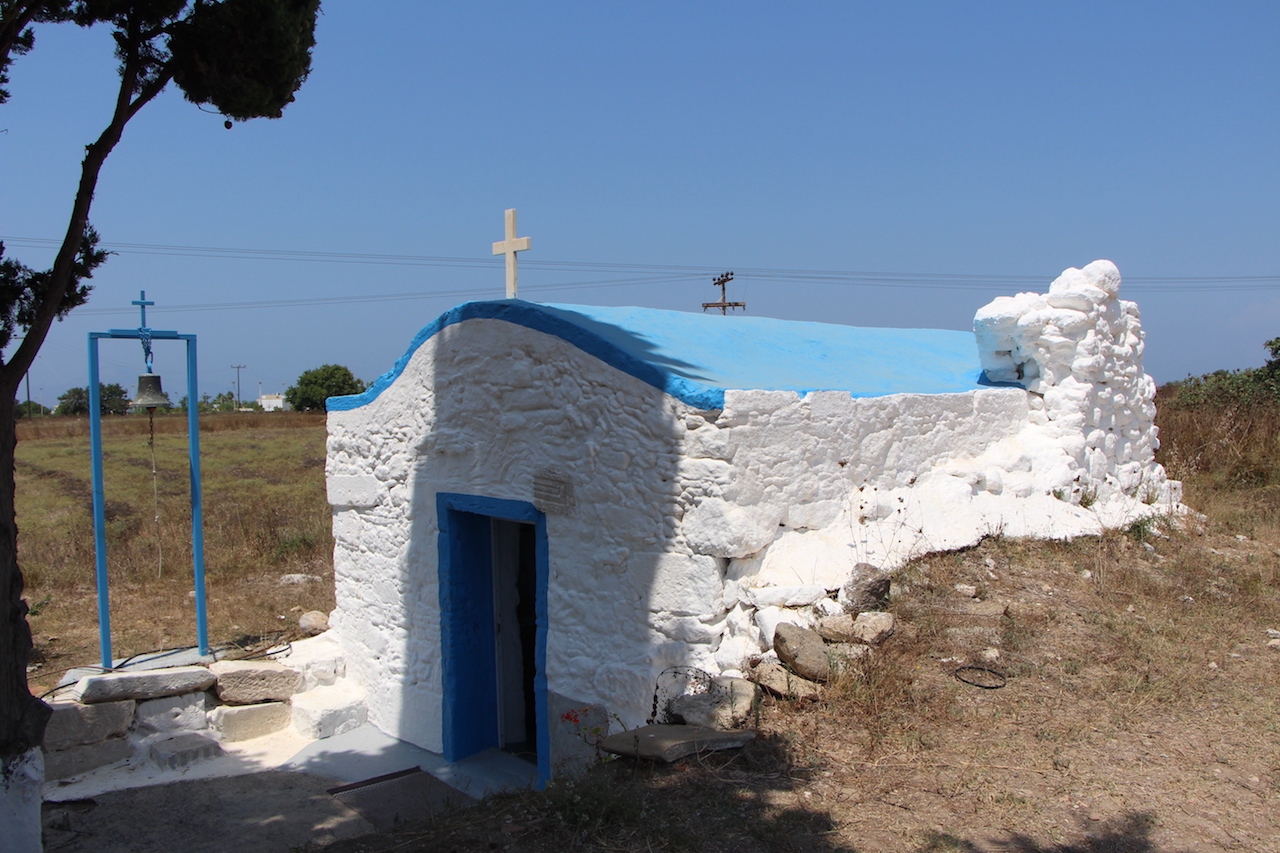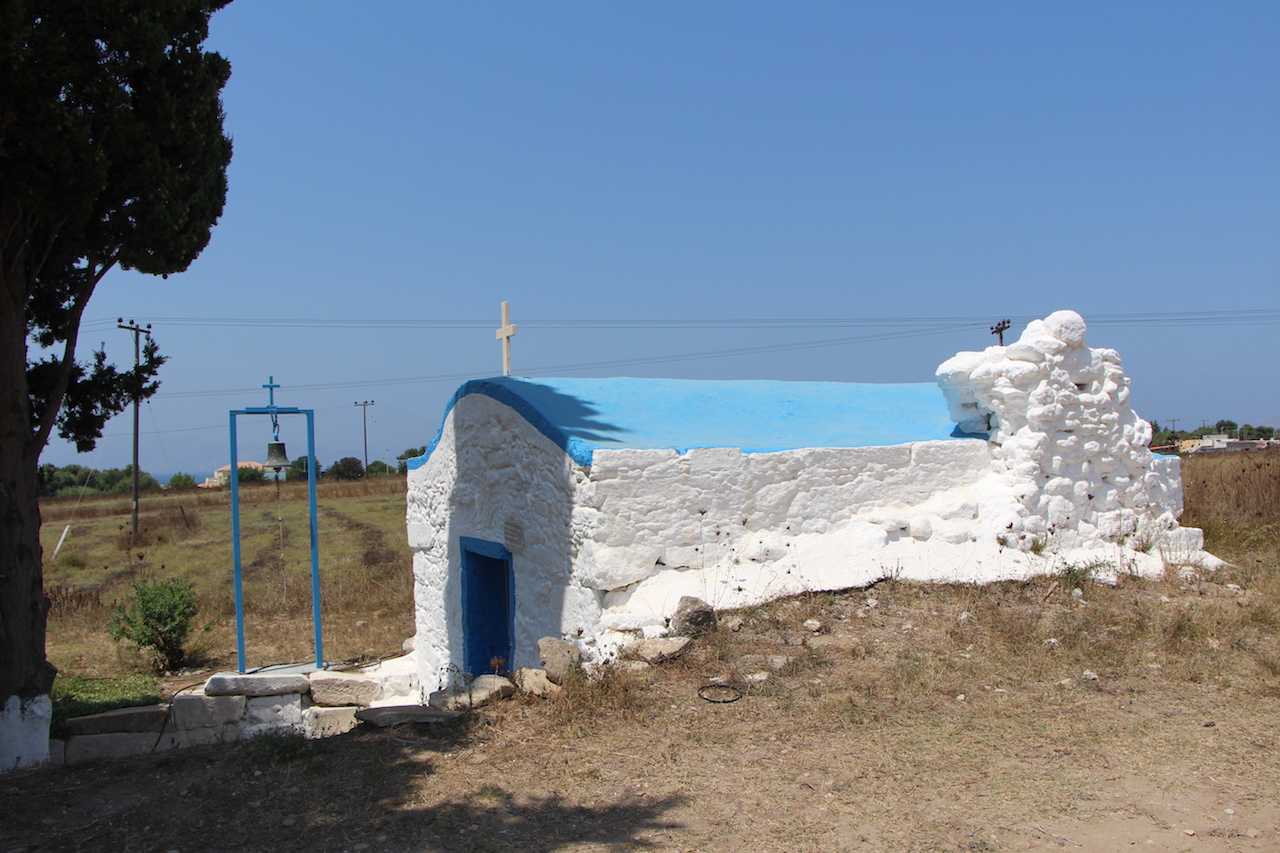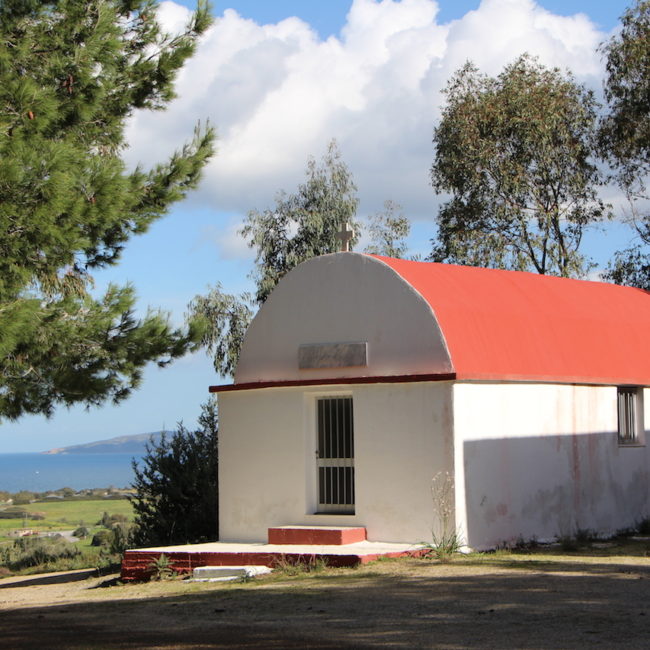Aghios Georgios Lyizos is an old church, lying between Mastichari and the main Kos-Kefalos road, by a torrent (Calami) where the road takes a deep curve. It is a small single-transept church with a semi-circular vault. Inside the church, you may see an interesting and still intact double altarpiece, 1,80 m. in length, 80 cm. in height and 13 cm. thick, dating from the early Christian period. The altarpiece is decoratively separated by an elliptical grapevine stem, into two sections, one with equal ridged crosses and the other with straight corrugations in a quincunx pattern. Inside the church there is also a protrusion with a finely sculpted ionic moulding depicting leaves coming out of crosses, but also supports of water basins for lustrations (perirrhanterion), and an inscription dating from the Roman times. In the churchyard, there used to be various marble architectural remains dating from the Roman and early Christian period. At a small distance, there were two column capitals of Corinthian order and an impost decorated with Acanthus. All these remarkable artefacts have unfortunately disappeared.
The church of Aghios Georgios Lyizos was built on the foundations of an ancient structure, whose walls are still visible. It is ascertained that an early christian basilica laid in the vicinity. The Bavarian archaeologist Ludwig Ross, while visiting Kos in May 1844, noted the existence of this ruined church, built with parts and pieces of ancient tombs. A little to the North East of the church, at the location “Tholos”, the Italian archaeologist Laurezzi noted, in 1929, the existence of a mosaic floor that was still visible 50 years ago, as well as a crypt and remains of an apse.
It is believed that the church of Aghios Georgios Lyizos lies at the center of the ancient Deme of Ippioton The ancient headstones that lay at the location of the church, are believed to belong to an ancient temple dedicated to Demeter or Hera, dating from the Roman period. According to inscriptions, the gods Pan and Hera were worshiped in the vicinity. The Italian archaeologist Laurezzi discovered in 1929 part of the foundations of the temple of Hera made of limestone ashlars. These foundations stood on the older remains dating from the classical or hellenistic period. The whole structure was 9,60 x 8,60 meters in dimension.
(Source: Georgios Mastoropoulos, Antimacheia Koa)








